What are two effects of enabling auto-cache in a FortiAnalyzer report? (Choose two.)
Which two methods can you use to send event notifications when an event occurs that matches a configured
event handler? (Choose two.)
Which two settings must you configure on FortiAnalyzer to allow non-local administrators to authenticate on FortiAnalyzer with any user account in a single LDAP group? (Choose two.)
Which item must you configure on FortiAnalyzer to email generated reports automatically?
Which clause is considered mandatory in SELECT statements used by the FortiAnalyzer to generate reports?
Which two statements about log forwarding are true? (Choose two.)
Which statement correctly describes the management extensions available on FortiAnalyzer?
In order for FortiAnalyzer to collect logs from a FortiGate device, what configuration is required? (Choose two.)
After generating a report, you notice the information you were expecting to see is not included in it. What are two possible reasons for this scenario? (Choose two.)
Which three RAID configurations provide fault tolerance on FortiAnalyzer? (Choose three.)
What FortiGate process caches logs when FortiAnalyzer is not reachable?
View the exhibit:

What does the 1000MB maximum for disk utilization refer to?
Which statement correctly describes RAID 10 (1+0) on FortiAnalyzer?
Refer to the exhibit.
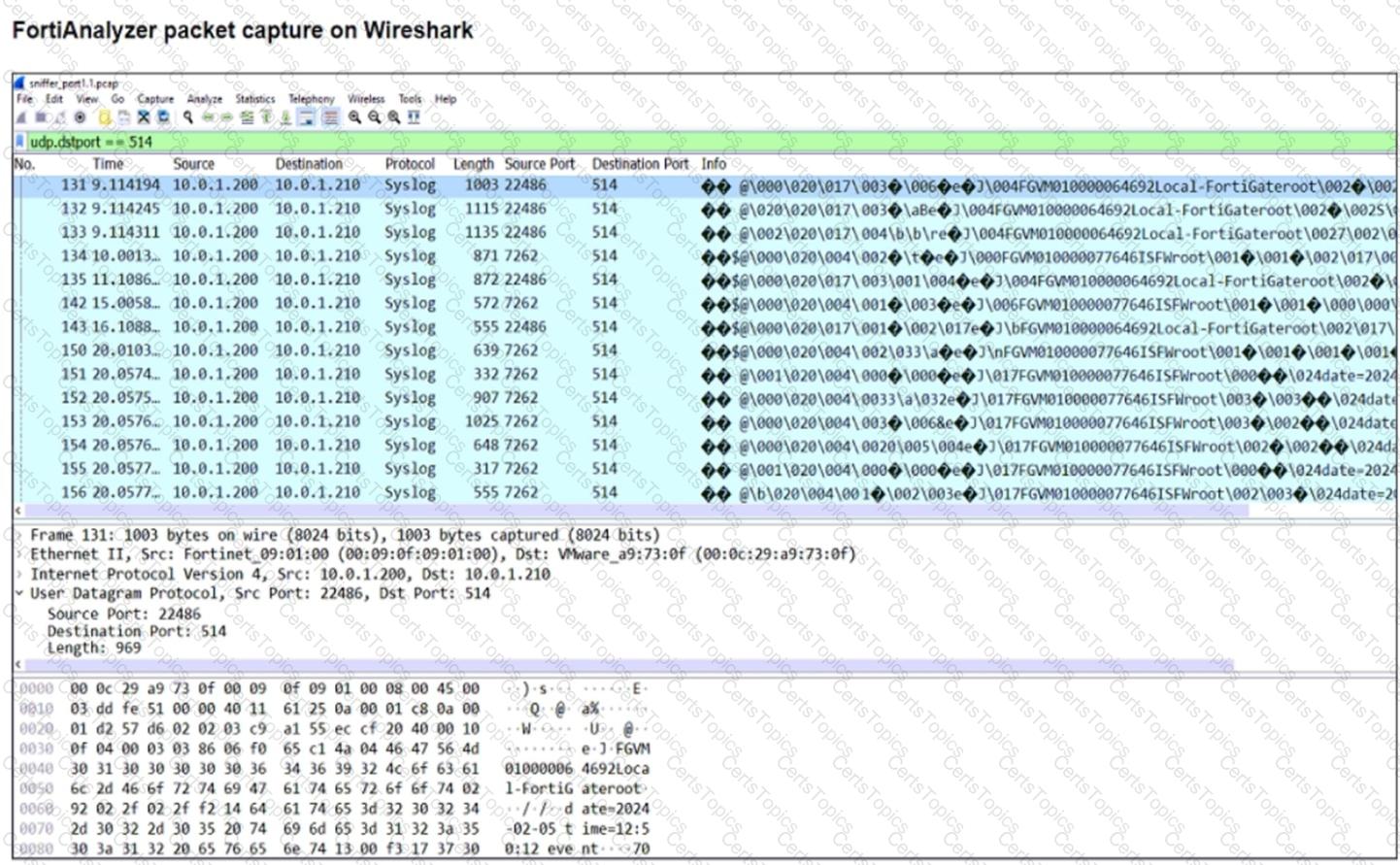
The capture displayed was taken on a FortiAnalyzer.
Why is a single IP address shown as the source for all logs received?
What can you do on FortiAnalyzer to restrict administrative access from specific locations?
Why should you use an NTP server on FortiAnalyzer and all registered devices that log into FortiAnalyzer?
Which statement about the communication between FortiGate high availability (HA) clusters and FortiAnalyzer is true?
In FortiAnalyzer’s FormView, source and destination IP addresses from FortiGate devices are not resolving to
a hostname. How can you resolve the source and destination IPs, without introducing any additional
performance impact to FortiAnalyzer?
You finished registering a FortiGate device. After traffic starts to flow through FortiGate, you notice that only some of the logs expected are being received on FortiAnalyzer.
What could be the reason for the logs not arriving on FortiAnalyzer?
Which two statements are true regarding high availability (HA) on FortiAnalyzer? (Choose two.)
On FortiAnalyzer, what is a wildcard administrator account?
How are logs forwarded when FortiAnalyzer is using aggregation mode?
By default, what happens when a log file reaches its maximum file size?
What is the purpose of the FortiAnalyzer command execute format disk?
Which process is responsible for enforcing the log file size?
If you upgrade your FortiAnalyzer firmware, what report elements can be affected?
What are the operating modes of FortiAnalyzer? (Choose two)
Which two of the available registration methods place the device automatically in its assigned ADOM? {Choose two.)
How does FortiAnalyzer retrieve specific log data from the database?
What is the purpose of employing RAID with FortiAnalyzer?
What does the disk status Degraded mean for RAID management?
NO: 14
View the exhibit.

Why is the total quota less than the total system storage?
Refer to the exhibit.
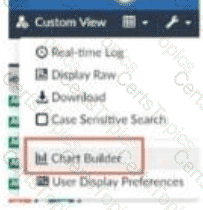
What is the purpose of using the Chart Builder feature on FortiAnalyzer?
Refer to the exhibit, which shows the HA configuration settings of a FortiAnalyzer device.
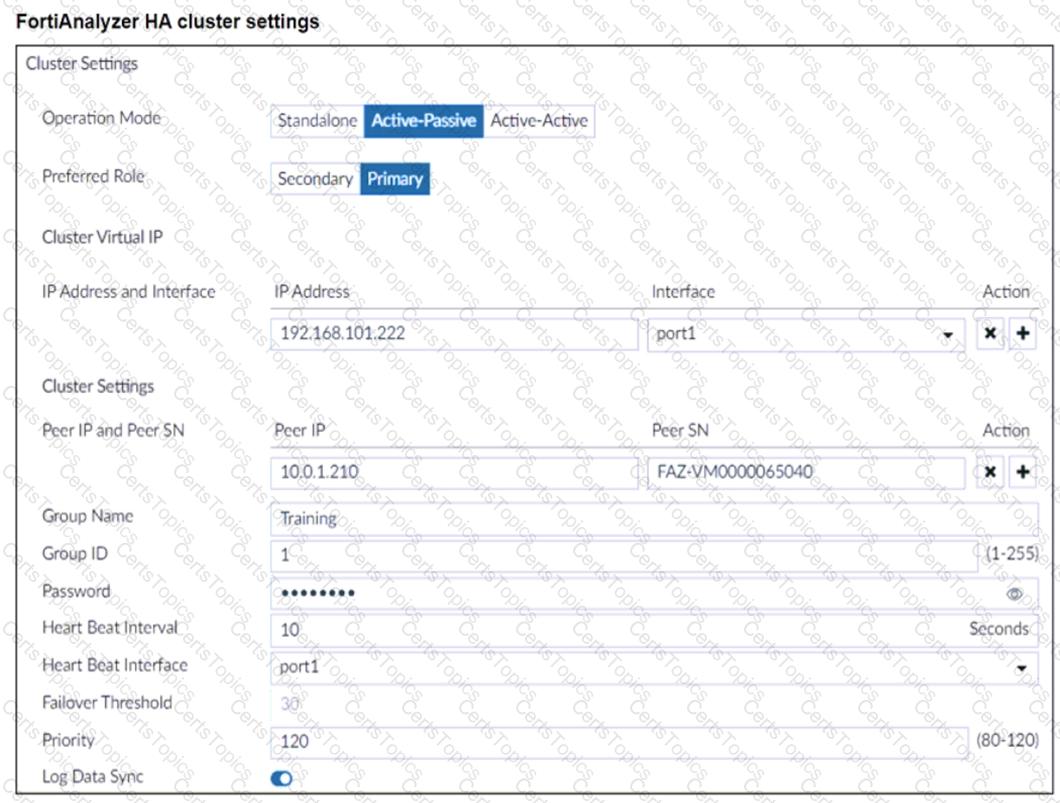
The administrator wants to join this FortiAnalyzer to an existing HA cluster. What can you conclude from the configuration displayed?
After you have moved a registered logging device out of one ADOM and into a new ADOM, what is the
purpose of running the following CLI command?
execute sql-local rebuild-adom
Logs are being deleted from one of the ADOMs earlier than the configured setting for archiving in the data
policy.
What is the most likely problem?
Refer to the exhibit.
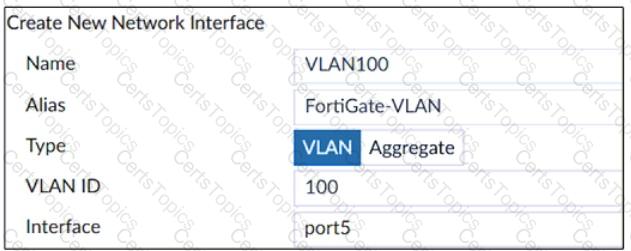
What is the purpose of configuring FortiAnalyzer with the settings displayed in the image?
What purposes does the auto-cache setting on reports serve? (Choose two.)
What are analytics logs on FortiAnalyzer?
Which tabs do not appear when FortiAnalyzer is operating in Collector mode?
Which FortiAnalyzer feature allows you to use a proactive approach when managing your network security?
What is the best approach to handle a hard disk failure on a FortiAnalyzer that supports hardware RAID?
Refer to the exhibit.
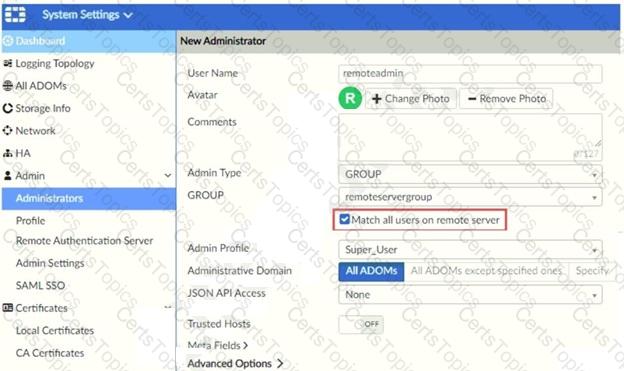
The exhibit shows “remoteservergroup” is an authentication server group with LDAP and RADIUS servers.
Which two statements express the significance of enabling “Match all users on remote server” when configuring a new administrator? (Choose two.)
Which two statements are true regarding fabric connectors? (Choose two.)
Consider the CLI command:

What is the purpose of the command?
For proper log correlation between the logging devices and FortiAnalyzer, FortiAnalyzer and all registered
devices should:
Refer to the exhibit.
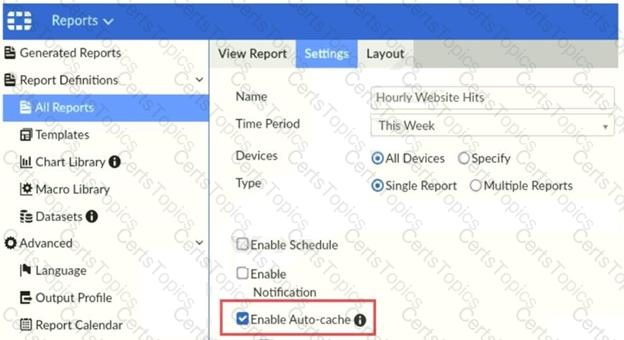
Which two statements are true regarding enabling auto-cache on FortiAnalyzer? (Choose two.)
Which two statements about high availability (HA) on FortiAnalyzer are true? (Choose two.)
What is the purpose of trigger variables?
Which statement describes a dataset in FortiAnalyzer?
Which two statements about creating ADOMs are true1? (Choose two.)
Which two statement are true regardless initial Logs sync and Log Data Sync for Ha on FortiAnalyzer?
In the FortiAnalyzer FortiView, source and destination IP addresses from FortiGate devices are not resolving to a hostname.
How can you resolve the source and destination IP addresses, without introducing any additional performance impact to FortiAnalyzer?
You need to upgrade your FortiAnalyzer firmware.
What happens to the logs being sent to FortiAnalyzer from FortiGate during the time FortiAnalyzer is
temporarily unavailable?